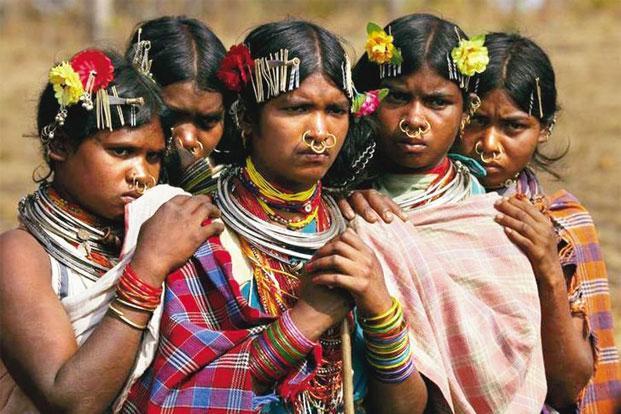Want To Know About Odisha’s Tribes? Embark On A Tribal Tour Of The Hinterlands

Bhubaneswar: Odisha has one of the most diverse tribal populations in India with over 62 tribes including 13 primitive ones. Around 29 per cent of Odisha’s population is tribal.
There is no better way to learn more about the tribal culture than a tribal tour to Odisha.
The tours to theses sensitive Odisha tribal villages are focused on the principles of eco-tourism, which aims to bring benefit to the community one visits and is also based on the principles of Responsible Travel, where the guests share an authentic experience of rural tourism with proper concern and care for the culture, community and environment.
The best place to visit is Mundiguda in Malkangiri to visit the weekly market of the Bondo and Didayi tribes.
Bondos are the most primitive tribes of Odisha living in the Bondo hills. They speak Remo, a dialect which has an affinity with the language of the Mundas of Austro-Asiatic descent.
The ‘ringa’, a 2 ft wide and long fabric, woven from the ‘kerang’ plant, and tied to their waist is their traditional costume. Heavy brass and aluminium collar necklaces and beads are vital accessories used by the Bonda women.
The Didayis share the same territory as the Bondos but speak another variant of the Munda language. Didayi women wear a ‘kisalu’ and are fond of ornaments made from silver, gold, aluminium and some alloys.
The village council plays an important role in their lives. All village elders, the headman and the village priest constitute the village council which has an important role in their lives.
Another place to visit is Gupteswara, to see the Dhuruba tribes.
Drive to Machhakund in Koraput district area to visit the primitive Barogadaba tribe.
Gotalpara and Dural villages are typical Barogadaba villages. This tribe is culturally and socially more evolved and has very clean and well-kept homes. The Gadabas believe in strong family ties and accord an equal status to men and women. They celebrate the “Goter” festival with much fanfare and organize a hunting festival during March and April. Rice beer and Mahua liquor are prepared for the occasion and the enchanting Dhemsa dance is very much part of the merrymaking.
For tribal tourism, Paraja and Kondh villages in Rayagada are the best. One can also drive to the Niyamgiri Hill to visit the primitive villages of Dongaria Kondh.
The Dongarias are concentrated in Bisamkatak in the Niyamgiri hills and are very aggressive by nature. The men sport long hair and wear a comb through the hair as an accessory.
Dongria Kondhs live in the Niyamgiri Hills of Odisha.
The women of the group are distinguished due to the heavy adornment of jewellery such as nose rings.
The state government had imposed a three year ban on photography and videography of the tribal groups in 2012 and regulated the visit of foreign tourists in the areas home to Bonda, Dongoria Kandhas and other such tribes. The ban was particularly on the vulnerable tribal groups like, Bonda, Didayi, Lanjia Saura, Juang, Kutia Kondh, Chuktia Bhunjia, Saura, Paudi Bhuyan, Lodha, Dongria Kondh, Hill Khadia, Mankirdia and Bihor. The ban was prompted after the controversy over the “human safari” involving Jarawa women in Andaman and Nicobar Islands. However, the ban was lifted in 2015 owing to the dwindling tourists to the state. It was decided to allow foreign tourists to visit some tribal areas. Local youths were trained as tourist guides.

Comments are closed.